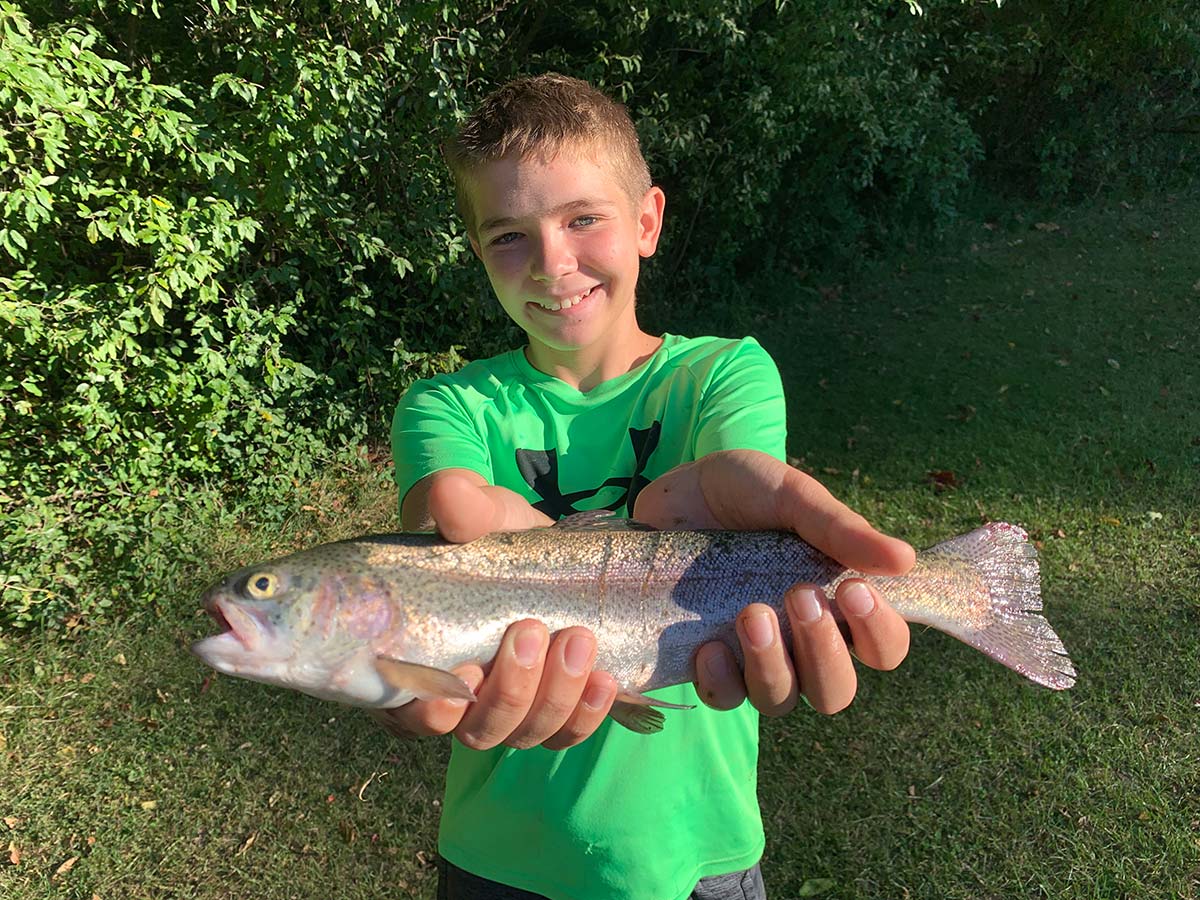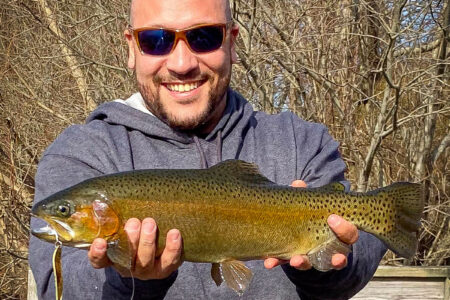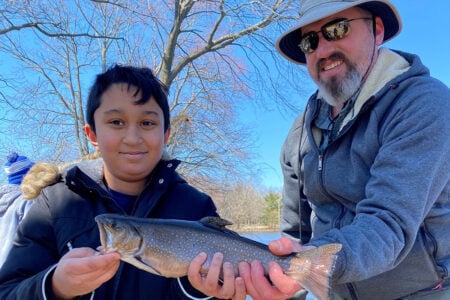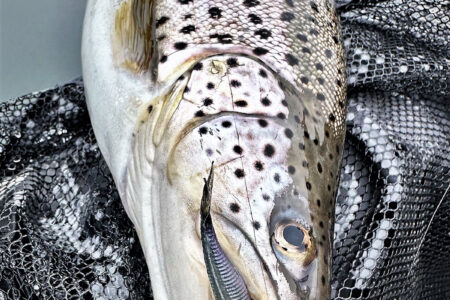
In much of the Northeast, wild rainbow trout are similar to the middle child growing up with an older and a younger sibling; they don’t always receive a great deal of attention despite possessing qualities that are rather noteworthy.
In the trout world, native brook trout are lauded for their survival capability over thousands of years in addition to their plight to keep a foothold on their home waters. On the flip side, brown trout are both loved and despised for their adaptive attributes and growth that put them in direct competition with the native brookies. As those two species collide most frequently in nature and stream management debate, wild rainbows sometimes get brushed aside.
Rainbow trout are actually an invasive species to the eastern United States, with their origins including waters of the U.S. west coast, Mexico, Russia and Asia. There is historical documentation that shows rainbow trout were brought east in the late 1800s. Their addition to the mix was met with applause in the earliest days as their invasive influences were disregarded in the short term, and the addition of a new trout species with a new blend of colors, fun fighting ability and excellent eating was enough to keep anglers’ happy in the moment.
The trout truly flourish in the western U.S. where their prevalence and respectable size offer fishermen another viable option despite threatening other native species. So what’s the story along the Appalachian chain, and in particular, the waters closest to or within The Fisherman readership? Why aren’t there more waters where rainbows naturally reproduce? Scientists and fish experts point toward habitat limitations that hinder a successful spawn.
Rainbow trout require low alkalinity and the perfect PH range amongst the other requirements such as cold water, rocky substrate and a good mix of riffles and deep pools. Their need for a moderate to steep gradient can be satisfied in many northeastern areas, but the acidity and alkalinity remain procreation issues. All the boxes have to get checked for rainbow trout to successfully spawn and for those eggs to mature and flourish into young fish.
Despite the number of wild rainbow streams lacking when contrasted to brown or brook trout, it’s important for anglers to know they do exist. In fact, each state lists Class “A” streams that support wild and/or native trout. An educated angler can deduce that tributaries of those waters may contain them as well. State agencies typically do a great job of listing streams and deepwater lakes that contain wild rainbows, providing a great starting point to seek out wild ‘bows.
If there aren’t an overload of wild rainbow trout streams, then why are rainbow trout so plentiful? Well, this is due to stocking. Each state has a robust stocking program that places a substantial value on rainbow trout being placed in the “put-and-take” waters that are meant for harvest. What’s more, larger, “trophy” models are often stocked within the 6- to 12-inchers, with agency bulletins released to the public to inform anglers of how many trout are placed in each stream or lake. They may also disseminate how many trophy trout, which often range from 4 to 8 pounds on average, are stocked in each body of water.
Stocked trout, under perfect conditions, can sometimes spawn. Furthermore, they can spawn with wild trout that were surviving naturally in a stream. When this happens, gene pools intermingle and different strains evolve for better or worse. Wild and holdover rainbow can live for many years. If a hatchery trout is raised on pellets and is released to the public after already eclipsing trophy status, one has to believe that it only needs a few years of “holding over” to challenge some state records.
New York’s state record rainbow sits at 31 pounds, 3 ounces, while Massachusetts rocks a 27.25-pound record rainbow. On the other hand, more modest record tabs can be found in other states in The Fisherman’s readership area including 13 pounds in New Jersey, 15.6 pounds in Pennsylvania, 14 pounds out of Connecticut, and 12.9 pounds in Rhode Island. When seeking out a potential record-breakers, keep in mind that the deeper lakes with sustained baitfish populations, and streams containing deep pools and great bug life are the most likely places to encounter super-sized rainbows.
For the fly guys, matching the day’s hatch is the order of the day. And for spin anglers, small spoons, rooster tails, Berkley Power worms and spinners turn out great results on wild or stocked fish. Stockers can be caught on the aforementioned lures as well as using Berkley Powerbait dough in a multitude of colors. Live bait, where allowed, gets the rainbows all fired up. Red worms, meal worms, nightcrawlers, minnows and shiners all catch fish effectively.




